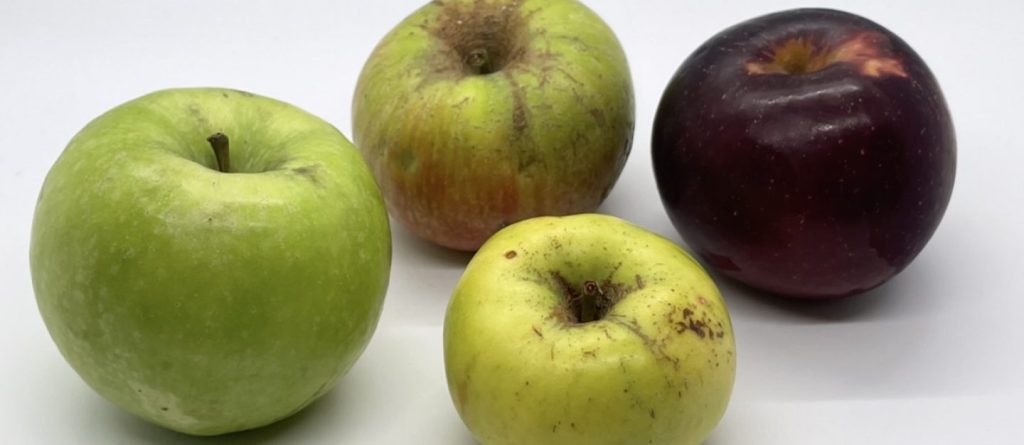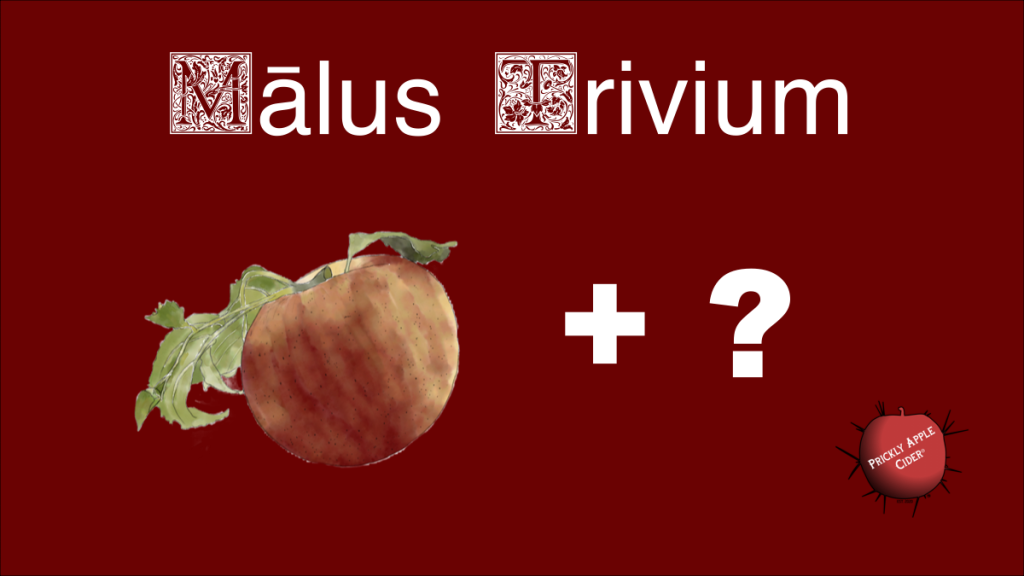Yeast Derivative Products (YDPs) can aid with fermentation by providing nitrogen and nutrients and with clarity by binding with colloidal compounds. But recent research has been focusing on how they can impact aroma. Remember that YDPs are just inactivated yeast developed to provide specific reactionary compounds. YDPs are made by using heat, enzymes, or even physical processes and are really just an extension of the autolysis process that occurs when cider is aged on its lees. YDPs are similar to commercial yeast strains. That is because, like commercial yeast, YDPs are created to produce targeted compounds versus the randomness you’d get in a wild or natural environment. Research is just starting to explore how these inactivated yeast can be utilized to enhance aroma. As noted by Peggy Rigou and associates, there are three types of aromas: varietal, fermentative, and aging(1).
Varietal aromas are terpenoids, thiols, and methoxypyrazines. As expected, these come from the fruit that you use. Each apple or pear variety will have unique aroma characteristics. The fermentative aromas are formed when yeast metabolize volatile compounds. The common fermentative aromas are higher alcohols, acetate and ethyl esters, volatile acids, sulfur compounds, and aldehydes(1). Higher alcohols usually have the greatest aromatic impact and are formed through the Ehrlich pathway. The final type of aromatic compounds are those created during the aging of cider. Most of these aromas are formed from reactions between compounds. When yeast die and become inactive, they release compounds stored in the cell walls and cytoplasm into the hard cider. These compounds react with others to create aromas.
The normal time this occurs is during maturation or aging. As yeast die, they fall to the bottom and becomes sediment or lees. The gross lees include the yeast from fermentation but also many solids originally in the juice. Normally, cider is racked or removed from these gross lees. Some residual yeast is usually still suspended in the cider. This flocculates and precipitates out with time to form fine lees, which are similar to gross lees but contain less solids and more yeast. YDPs are equivalent to these fine lees. However, YDPs have known compounds that will be released when added to your cider. Adding them before fermentation will usually provide nitrogen and nutrients that aid fermentation. Adding them post fermentation can assist in clearing cider. Both also can contribute compounds that produce volatile aromas as part of the cider making process.
As noted earlier, there are three main types of aromas in hard cider. The apple varieties used to make the cider have different compounds that can form aromas unique to that apple. Some of these aromas are present in the raw apple while others are created. YDPs can provide compounds that enhance the varietal aromas. Fermentative aromas are formed by yeast during fermentation. Yeast want to reproduce. To do that, they need nutrients and a source of energy (i.e. sugar). While nitrogen is one of the main nutrients, there are numerous other compounds including vitamins and minerals that are also important. Yeast use different pathways to collect the nutrients they need for reproduction. These processes can also create aromatic compounds or the precursor compounds that produce aroma. Aging or maturation aromas are the final type. These aromas are created when compounds react. The reactions can be the result of lactic or acetic acid bacteria or they can occur as the result of time, temperature, and acidity.

Varietal Aromas
The most common varietal aromas in wine are terpenoids, thiols, and methoxypyrazines(1). Here is a list of common varietal aromas compounds with their threshold value(1). Remember that aroma compounds can influence other aroma compounds even when they are below their threshold levels. Some YDPs can enhance these varietal aromas.
| Aroma Compound | Type | Aroma Smell | Threshold (ug/l) |
| 4-methyl-mercaptopentan-2-one (4MMP) | Thiol | Black Currant | 0.4 |
| cis-rose oxide | Terpenoid | Green Floral | 0.5 |
| 3 mercapto-hexyl acetate (3MHA) | Thiol | Tropical Fruit | 4.2 |
| 3-isobutyl-2-methoxypyrazine (IBMP) | Methoxypyrazines | Bell Pepper | 1-10 |
| Linalool | Terpenoid | Floral | 15 |
| Citronellol | Terpenoid | Citrus | 18 |
| Geraniol | Terpenoid | Rose, Geranium | 130 |
| Nerol | Terpenoid | Rose, Floral | 400 |
| 3 mercapto-hexanol (3MH) | Thiol | Tropical Fruit | 60 |
Fermentative Aromas
Higher, also called fusel, alcohols are the most aromatic compounds in wine. These are usually created by yeast through the Ehrlich pathway. YDPs can provide compounds used by yeast in these various pathways. Other common fermentative aromas include esters and volatile acids. Esters are formed from the reaction of fusel alcohols and acids. Volatile acids are formed from fatty acids. Here is a list of common fermentative aromas found in wine and their threshold(1)(2)(3).
| Aroma Compound | Type | Aroma Smell | Threshold (ug/l) |
| Acetic Acid | Acid | Vinegar, Sour | 750,000 |
| 1-Pentanol (Amyl Alcohol) | Fusel | Apricot, Alcohol | 80,000 |
| Isoamyl Alcohol | Fusel | Marzipan | 7,000 |
| Isobutyl Acetate | Ester | Fruity | 1,600 |
| Phenethyl Alcohol | Fusel | Rose, Floral | 1,100 |
| Amyl Acetate | Ester | Banana | 1,100 |
| Isoamyl Acetate | Ester | Banana | 200 |
| Ethyl Octanoate | Ester | Pineapple | 50 |
| Ethyl Hexanoate | Ester | Fruity, Apple | 14 |

Aging Aromas
As cider and wine age, reaction occur forming new aromatic compounds. In the traditional aging process that uses wood barrels or corked bottles, one of the main aromas is acetaldehyde. Acetaldehyde is formed from ethanol oxidation. Alcohol oxidation forms many of the various aldehyde compounds found in wine. Barrels, like plastic and cork, breath. Oxygen can pass through these materials with time allowing oxidation of various compounds. Aging aromas are linked to the oxidation of alcohols, both ethanol and fusel alcohol. They are also formed by adjuncts, like oak, and contact with lees. This is where YDPs come back into play. Adding them to your cider post fermentation can enable the formation of new compounds during aging. The YDPs release mannoproteins, lipids, and other compounds that can form new aroma compounds. Many of these are created through Maillard reactions. Research also indicated that YDPs can slow some reactions. This happens because YDPs can scavenge oxygen, which inhibits oxidative reactions during aging. Some common aroma compounds formed during aging are the following(1).
| Aroma Compound | Type | Aroma Smell | Threshold (ug/l) |
| Acetaldehyde | Aldehyde | Over-Ripe Apple | 100,000 |
| Hexanal | Aldehyde | Grass | 5,000 |
| Octanal | Aldehyde | Citrus | 0.7 |
| Methional | Aldehyde | Boiled Potato | 0.5 |
| 3-mercaptohexanol | Aldehyde | Passion Fruit | 0.06 |
The aroma and flavor of your cider is created by numerous compounds. These compounds come from the apples variety, during fermentation from the yeast, and during aging from various sources. One source that impacts flavor is dead yeast found in the sediment or lees. When yeast die, they release compounds stored in the cell walls and the cytoplasm. This is called autolysis and a way to mimic this process is by adding Yeast Derivative Products (YDPs). This is similar to using commercial yeast to ferment your cider. YDPs will provide a known reaction versus the somewhat random reaction you can get from aging on the natural lees. Whether you choose to age on lees, add YDPs, or minimize aging and lees impact, understanding how it all contributes is important to making great cider.
(1) P. Rigou and associates, Impact of industrial yeast derivative products on the modification of wine aroma compounds and sensorial profile, Food Chemistry 358, 2021
(2) L. Zhao and associates, Characterization of volatile aroma compounds in litchi (Heiye) wine and distilled spirit, Food Science & Nutrition, Volume 9, Issue 11, p. 5914-5927, 2021
(3) A. Sousa and associates, Geographical differentiation of apple ciders based on volatile fingerprint, Food Research International 137, 109550, 2020
Did you enjoy this article? Don’t miss future posts from PricklyCider.com by following us today! PricklyCider.com is your source for all things cider.
Below are similar articles you can explore or search PricklyCider.com to find other related articles about making and enjoying hard cider.


